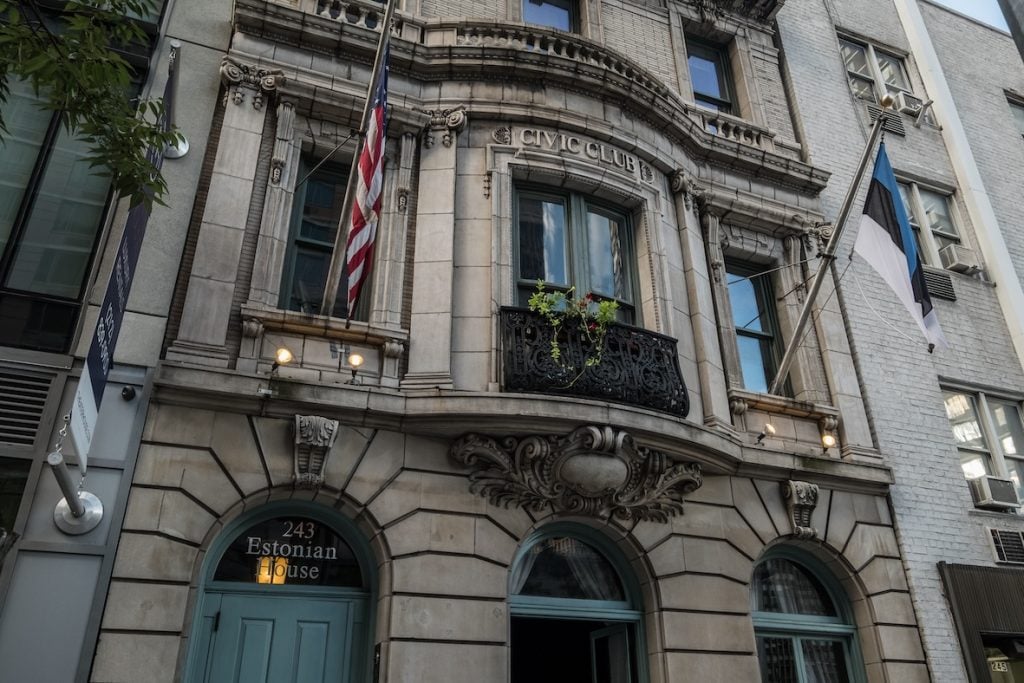Art World
Meet Esther, New York’s Smart, Scrappy, and Small New Art Fair
During Frieze Week, 25 galleries will present work at the New York Estonian House.

It has been a wild few years in the art-fair game, with power players like Frieze, Art Basel, and Art Assembly laying out large sums to acquire existing events. But all the while, scrappy dealers have been building alternatives to the mainstream art fair model, collaborating on projects like the Basel Social Club in that Swiss city, Condo in London, and Our Week in Seoul.
Another entry in that DIY category will arrive in New York during Frieze Week, running May 1 through 4. It is called Esther, and it will gather 25 galleries—mostly young outfits plus a few established ones—in the New York Estonian House on East 34th Street, with art taking up residence in various rooms, hallways, and other spaces. Two Estonians are behind the project: Margot Samel, who runs a gallery under her own name in Manhattan’s Tribeca neighborhood, and Olga Temnikova, of Tallin’s Temnikova & Kasela.
The two are interested in “creating this environment where galleries can take more risk,” Samel said in an interview. The participation fee for exhibitors is a mere $1,500. From the perspective of financing a fair, “I don’t know how sustainable that is,” Samel said, but the price point means that dealers “are not constantly, in the back of [their] minds, doing the math” of how many works need to be sold to break even. (Expenses to participate in a major fair can run quickly into six figures.) Admission to the event will be free, but visitors will need to book a reservation.
The Estonian government is providing some funding, but Esther seems to be much more about supporting peers than turning a profit.
“Coming from Estonia, I usually don’t have much opportunity to host other galleries,” Temnikova said in a video call. “But this community is super important for me. So, to have some impact, and to do something special, it was kind of logical.”
Planning began a year ago, and the two organizers’ ambitions for Esther have grown. “At first I thought, OK, it will be a pop-up of a few galleries,” Temnikova said, but as the two kept talking, plans expanded to include 25 galleries.
The Estonian House—the headquarters for an eponymous nonprofit that promotes the country’s culture—is a four-story Beaux-Arts building that began life in the late 1890s as the Civic Club, which quickly shuttered. New York dealer Silke Lindner said in an email that Esther was appealing because of that “beautiful interior design as an alternative space to the standard fair designs.” She will be showing new works on paper by artist Emma Kohlmann.

Inside the New York Estonian House, the home of the Esther art fair in May. Photo: Courtesy of Estonian House.
Other dealers who have signed on include Bank (of Shanghai), Seventeen (London), Andrew Kreps Gallery (New York), and the Green Gallery (Milwaukee).
“Esther is a positive collaborative project, an invitation to a social and human-scale version of the art market,” Green Gallery founder John Riepenhoff said. “There’s a natural bond between the Baltic States and the Great Lakes States, so the Green Gallery has an appreciation for the host venue’s community and culture.”
It sounds like Esther will be a nice place to hang out during the action-packed fair week. “We will have events, like talks and performances, and there are a couple of book launches,” Samel said. There will also be by-invitation dinners in the Estonian House’s downstairs bar. The food? Estonian fare, naturally, like sausages and potato salad.
As for the name: The two dealers were discussing female names, and settled on Esther because its spelling connects with Estonia and east, the location of both the fair and, from some vantage points, Estonia itself. There’s no relation to dealers Esther Kim Varet or Esther Schipper, but it follows a semi-recent trend of art concerns bearing first names, like the New York gallery Jenny’s and the Los Angeles nonprofit Joan, not to mention the L.A. fair Felix.
Building a new event from scratch, you do it all yourself. “It’s really hard to name an art fair,” Samel said.





